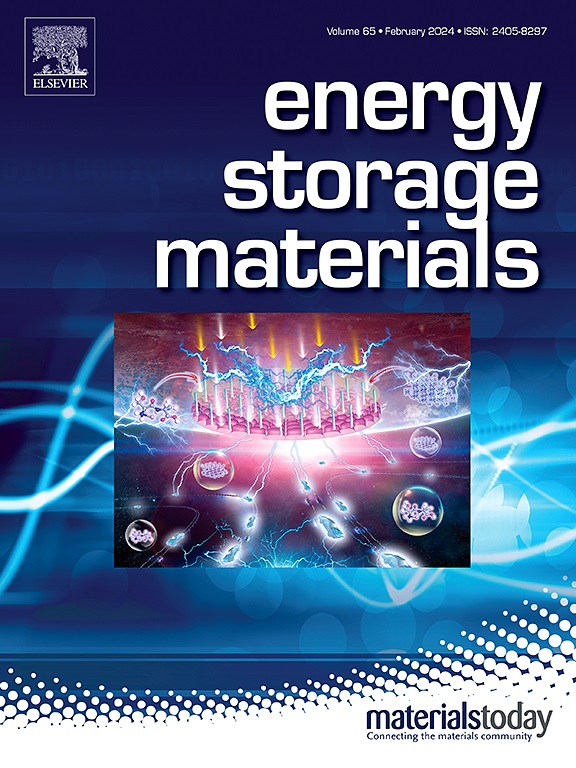Advanced design strategies for enhancing the thermal stability of Ni-rich co-free cathodes towards high-energy power lithium-ion batteries
IF 18.9
1区 材料科学
Q1 CHEMISTRY, PHYSICAL
引用次数: 0
Abstract
The global market share of electric vehicles has rapidly grown from ∼10 % in 2022 to ∼18 % in 2024. However, safety issue is a crucial obstacle hindering the commercialization of high-energy lithium-ion batteries. The inferior thermal stability exhibited by high-energy Ni-rich cathodes has severely affected their practical application in LIBs. Particularly, Co in Ni-rich cathodes promotes lattice oxygen release, leading to reduced structural and thermal stability. Therefore, the development of Ni-rich Co-free cathode materials (NRCFs) is promising. Herein, the detrimental effects of Co on the thermal stability of Ni-rich layered oxides are demonstrated. Thereafter, we summarize in detail the popular modification strategies and mechanisms for enhancing the thermal stability of NRCFs. Finally, conclusions and future challenges and prospects for boosting the thermal stability of NRCFs are presented. Notably, synergistic modification strategies combining high-entropy doping and surface coating in single-crystal cathode materials is an efficient approach to significantly improve the thermal stability. Understanding the thermal stability of NRCFs has become urgent for the large-scale application of high-energy LIBs. More effective thermal safety strategies will be aroused to promote the development of next-generation power LIBs. This review aims to inspire further exploration of safer NRCFs featuring higher reversible capacity, attracting interest from both academic and industrial communities to accelerate the commercialization of NRCFs and promote the sustainable development of high-energy LIBs.


求助全文
约1分钟内获得全文
求助全文
来源期刊

Energy Storage Materials
Materials Science-General Materials Science
CiteScore
33.00
自引率
5.90%
发文量
652
审稿时长
27 days
期刊介绍:
Energy Storage Materials is a global interdisciplinary journal dedicated to sharing scientific and technological advancements in materials and devices for advanced energy storage and related energy conversion, such as in metal-O2 batteries. The journal features comprehensive research articles, including full papers and short communications, as well as authoritative feature articles and reviews by leading experts in the field.
Energy Storage Materials covers a wide range of topics, including the synthesis, fabrication, structure, properties, performance, and technological applications of energy storage materials. Additionally, the journal explores strategies, policies, and developments in the field of energy storage materials and devices for sustainable energy.
Published papers are selected based on their scientific and technological significance, their ability to provide valuable new knowledge, and their relevance to the international research community.
 求助内容:
求助内容: 应助结果提醒方式:
应助结果提醒方式:


